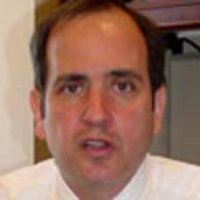Can a person’s demeanor shortly after a crime is committed help determine if he did the dirty deed? That’s one of two prime issues confronted by federal appeals Judge Richard Posner in a previously unreported decision in which he vividly derides a cornerstone of American law enforcement and prime time television: the police lineup.
United States of America v. John A. Ford involves the conviction of a personal trainer of robbing a bank in Palatine, Illinois, and raises two matters: Should the jury have known that he was cool as a cucumber two hours later at a gym? And was a group of mug shots shown the bank manager by the cops rigged to target Ford since he was clearly the palest and most freckle-filled of the white male suspects?
Ford, who had previous convictions for bank heists, allegedly robbed the bank but was back to his day job at a gym two hours later and 28 miles away. In appealing his jury conviction, he argued it was unfair that his post-robbery personal training client was not allowed to testify and indicate that Ford was “calm, friendly, and professional.”
“Who cares?” Posner asked a young defense lawyer from the Northwestern University Law School clinic during oral arguments. The young lawyer, surely mortified to be confronted by the legendary jurist, argued that most people would not be so calm if they’d just committed a crime.
Are there academic studies that suggest that, two hours after a crime, a criminal’s “lips are trembling, he’s slobbering,” Posner shot back facetiously.

“Why should a criminal be nervous after he commits a crime? Maybe during the commission,” said Posner. It’s total folly, he continued, to suggest that if some physical reaction—like trembling—is suggestive of criminality, its absence constitutes evidence of innocence.
As he now writes in affirming the conviction as part of a three-judge panel of the Chicago-based Seventh Circuit Court of Appeals, “Why should one expect the robber, having committed what he thought a successful crime that had enriched him, albeit modestly (his take was only $1,146), to be visibly agitated two hours later, far from the scene of the crime and not pursued by police (he was not arrested until two years later)?”
Far more intriguing to Posner is the issue of the photo array placed before the bank’s manager, who had confronted the dust-mask-wearing robber during the crime. That manager originally told police the mask covered the robber’s nose and mouth but allowed the manager to discern that the robber was a white male with a “very pale complexion” and “light colored eyebrows and freckles around his eyes.”
It was only later that a mask was found, then taking 16 months for a DNA analysis to be completed at the state’s seemingly woefully inefficient crime lab. At that point the police showed the manager an array of six head shots.
As in those Law & Order TV lineups, the head shots were placed on a table in front of the manager at the same time, side by side, in two rows, as Posner replicates in the decision. One was a shot of Ford, whose photo was in the middle of the top row.
The manager was asked if he recognized the robber—which raises a problem many criminologists have with traditional group lineups: The witness often assumes one of those before him must be the alleged criminal.
Having real individuals, or photos, shown one by one, sequentially, is considered a fairer and more accurate method. Witnesses to crimes are seen as more inclined to compare individuals with just their memory of the offender when shown the individuals sequentially. When shown them as a group, witnesses tend to pick whichever individual seems to most resemble what they recall.
Posner is generally believed to be the most prolific and most-quoted legal academic and jurist of his generation. And what irked him especially was that, of the six photos shown the bank manager, the one of Ford is “extremely pale and the others are swarthy and dark,” as he put it during the oral arguments. “They are all white, obviously, but they are all dark and he’s very light. “
“Don’t you have any pale people in your file of suspicious people?” he asked the government’s lawyer. That lawyer made the mistake of defending the selection.
“No, there is one really pale guy and everybody else is darker,” Posner retorted. “They are all quite dark.”
At that point, he got to the essence of the traditional police lineup of crime suspects.
“Isn’t it much better to show the pictures in sequence? If you show a group, the person will feel the guilty person is somewhere in here. Then you find the one that seems to look most like the person. Showing them in sequence is not as suggestive.”
Posner is generally seen as ideologically conservative but intellectually fearless and willing to test any and all assumptions. And so it was, when the government lawyer strained to defend the photos and the manner in which the police officer elicited responses from the bank manager.
Referring to police, the judge said, “What they want is a suggestive identification, though not so suggestive that it’s going to be thrown out [of court]. They know who they think is guilty and want the witness to identify that person.”
When the government lawyer quickly sought to rebut that assumption, and argue for the honesty of law enforcers, Posner stepped right in. “Oh, c’mon, that’s unrealistic. They want to nail these people, right? They’re confident they know who’s guilty, usually, and they’re helping to build a case. Nothing wrong with that. It just means that judges have to be careful in evaluating this evidence.”
Ultimately, the DNA evidence did in the defendant, and the panel of Posner, Diane Sykes of Milwaukee, and John Daniel Tinder of Indianapolis affirmed the conviction.






